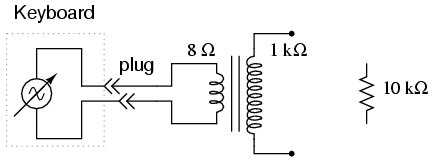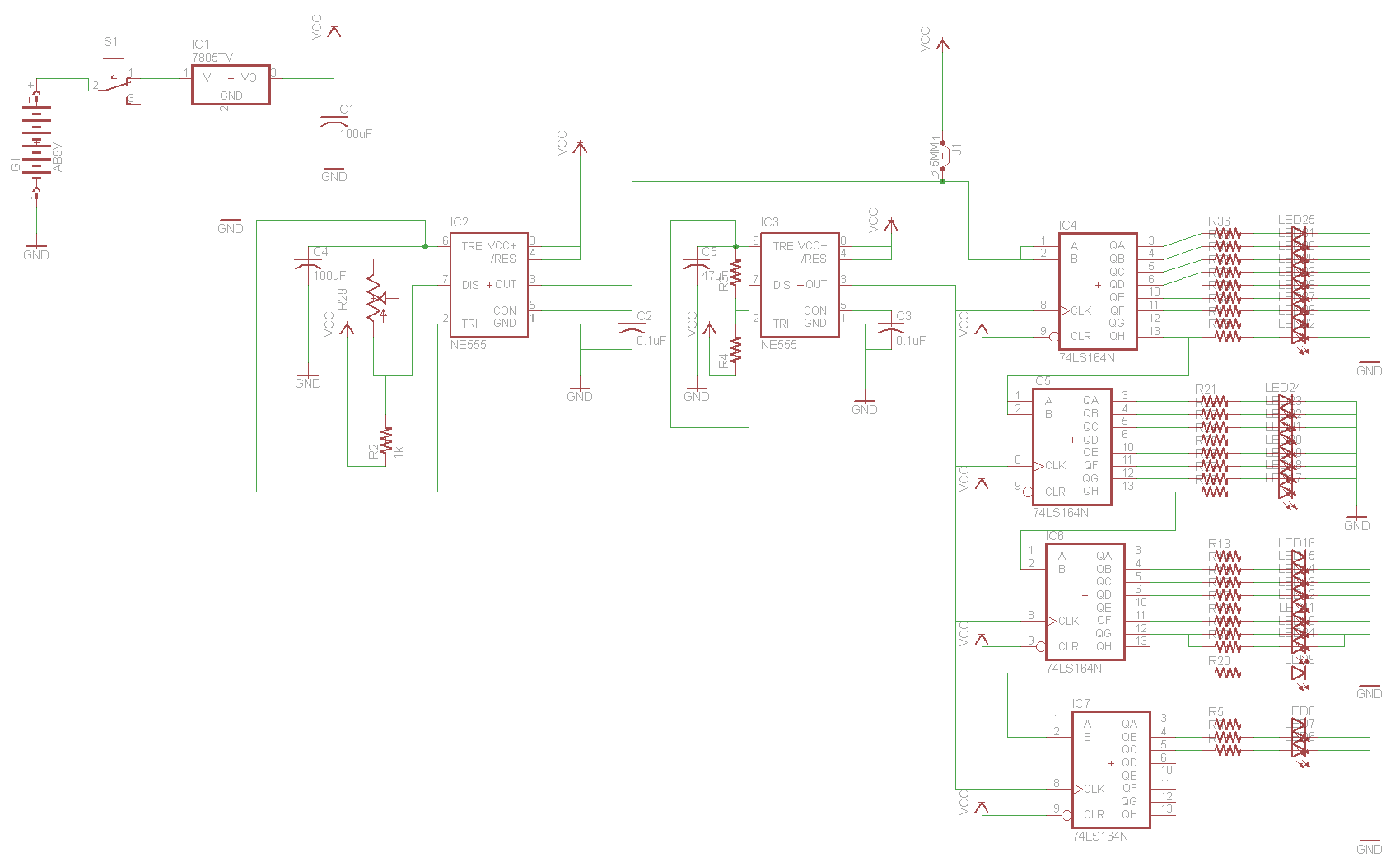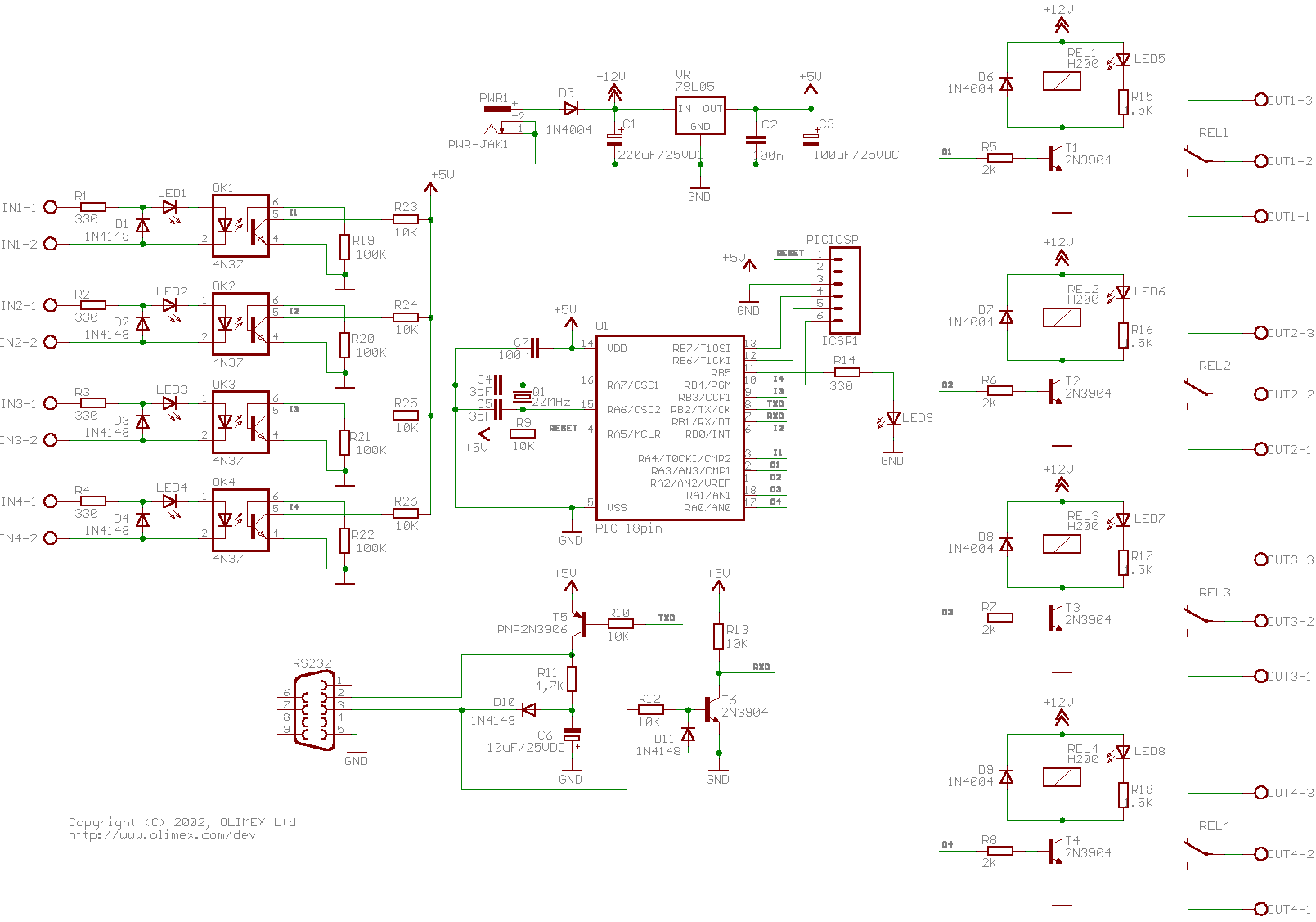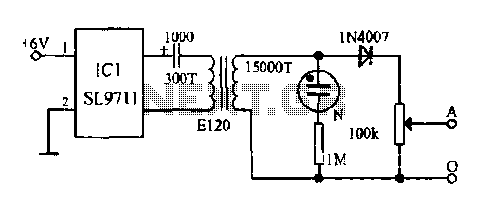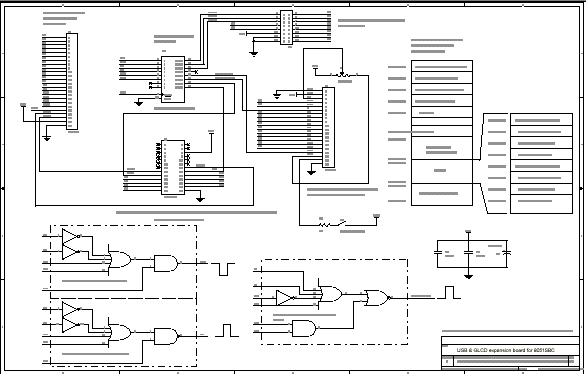
RS232 Dev Board
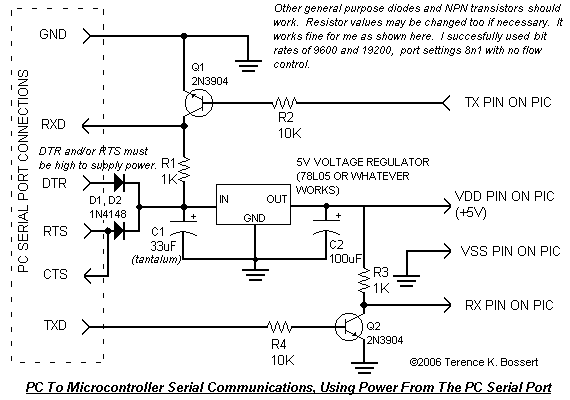
A simple RS232 example project that draws all its power from the serial port. It is designed to power a microcontroller and facilitate communication between the serial port and the microcontroller. This project utilizes the capability of PC serial ports to accept voltage levels between 0-5V, instead of adhering to the RS232 standard of approximately -10V to +10V. This feature eliminates the need for external power. It is important to note that either a 5.1V zener diode or a 5V voltage regulator can be employed. In the circuit, two 1N4148 diodes are used to prevent any negative voltage from entering the rest of the circuit in case either the DTR or RTS signals go negative. The circuit also incorporates two transistors that serve as switches and inverters. The inversion is necessary because the PC serial port employs positive voltage to indicate binary 0 (RS232 SPACE) and negative voltage (or, in this case, 0 voltage) for binary 1 (RS232 MARK). The voltage regulator maintains a stable output voltage, supplemented by decoupling capacitors. A zener diode can also be utilized for voltage regulation. This schematic was originally developed for PIC projects; however, other microcontrollers typically have similar serial communication methods and voltage supply requirements. Additionally, for compatibility with a solderless breadboard, it is necessary to connect the metal base of the breadboard to ground. Grounded shielding may also be required near the circuitry for proper operation.
The RS232 project described is a practical implementation aimed at simplifying the interfacing of microcontrollers with PC serial ports. The circuit operates within the constraints of standard RS232 communication while leveraging the lower voltage levels accepted by modern serial ports. The use of a voltage regulator or zener diode ensures that the microcontroller receives a stable power supply, critical for reliable operation.
The inclusion of 1N4148 diodes is a protective measure, ensuring that any potentially harmful negative voltages do not damage the microcontroller or other components. The transistor switches play a crucial role in adapting the signal levels between the microcontroller and the serial port, effectively translating the binary signals for proper communication.
Furthermore, the design's adaptability to different microcontrollers highlights its versatility, as many microcontrollers share similar communication protocols and voltage requirements. The necessity of grounding the breadboard adds an extra layer of safety and stability, ensuring that the circuit operates without interference from stray voltages or noise.
In summary, this RS232 project exemplifies a straightforward yet effective approach to power and communication for embedded systems, showcasing essential electronic components and design considerations that enhance functionality and reliability.A simple RS232 example project that takes all the power it needs from the serial port. Use it to power your microcontroller and communicate between serial port and microcontroller. Takes advantage of the fact that pc serial ports will accept 0-5V rather than the RS232 standard of around negative 10V to positive 10V. Very convenient - no external p ower required! Note that you may use either a 5. 1V zener or a 5V regulator. In the circuit above, the two 1N4148 diodes prevent any negative voltage getting into the rest of the circuit if either DTR or RTS would happen to go negative. The two transistors function as transistor switches. The transistors also act as inverters. We need to invert things since the pc serial port uses positive voltage to represent binary 0 (RS232 SPACE) and negative voltage (or lucky for us 0 voltage) for binary 1 (RS232 MARK).
Of course the voltage regulator regulates the voltage with some decoupling capacitors. A zener diode can also be used to regulate the voltage. In my schematic, you can see that I developed this for my PIC projects, but other microcontrollers will probably have similar serial communications methods and similar supply voltage requirements. One thing I needed to do to use this with my solderless breadboard was to connect the metal on the bottom of the breadboard to ground.
You may need a similar sort of grounded shielding near your circuitry if you use this. 🔗 External reference
The RS232 project described is a practical implementation aimed at simplifying the interfacing of microcontrollers with PC serial ports. The circuit operates within the constraints of standard RS232 communication while leveraging the lower voltage levels accepted by modern serial ports. The use of a voltage regulator or zener diode ensures that the microcontroller receives a stable power supply, critical for reliable operation.
The inclusion of 1N4148 diodes is a protective measure, ensuring that any potentially harmful negative voltages do not damage the microcontroller or other components. The transistor switches play a crucial role in adapting the signal levels between the microcontroller and the serial port, effectively translating the binary signals for proper communication.
Furthermore, the design's adaptability to different microcontrollers highlights its versatility, as many microcontrollers share similar communication protocols and voltage requirements. The necessity of grounding the breadboard adds an extra layer of safety and stability, ensuring that the circuit operates without interference from stray voltages or noise.
In summary, this RS232 project exemplifies a straightforward yet effective approach to power and communication for embedded systems, showcasing essential electronic components and design considerations that enhance functionality and reliability.A simple RS232 example project that takes all the power it needs from the serial port. Use it to power your microcontroller and communicate between serial port and microcontroller. Takes advantage of the fact that pc serial ports will accept 0-5V rather than the RS232 standard of around negative 10V to positive 10V. Very convenient - no external p ower required! Note that you may use either a 5. 1V zener or a 5V regulator. In the circuit above, the two 1N4148 diodes prevent any negative voltage getting into the rest of the circuit if either DTR or RTS would happen to go negative. The two transistors function as transistor switches. The transistors also act as inverters. We need to invert things since the pc serial port uses positive voltage to represent binary 0 (RS232 SPACE) and negative voltage (or lucky for us 0 voltage) for binary 1 (RS232 MARK).
Of course the voltage regulator regulates the voltage with some decoupling capacitors. A zener diode can also be used to regulate the voltage. In my schematic, you can see that I developed this for my PIC projects, but other microcontrollers will probably have similar serial communications methods and similar supply voltage requirements. One thing I needed to do to use this with my solderless breadboard was to connect the metal on the bottom of the breadboard to ground.
You may need a similar sort of grounded shielding near your circuitry if you use this. 🔗 External reference
